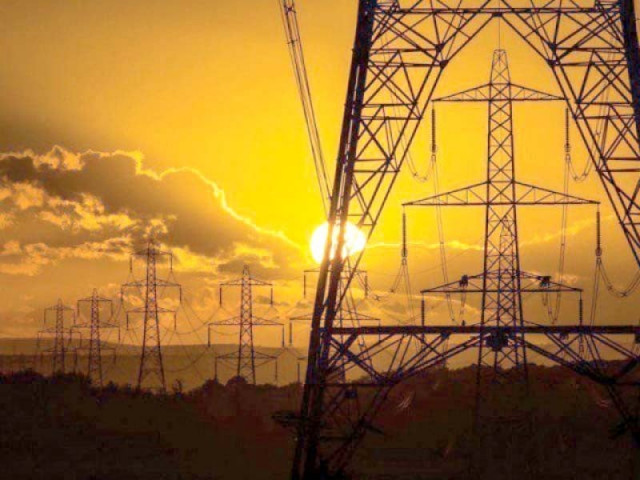Consumers face Rs0.95 power tariff hike
Nepra allows increase to cut subsidies under Re-Targeting Power Sector Subsidies-Phase Il

The National Electric Power Regulatory Authority (Nepra) decided on Thursday to increase power tariff by up to Rs0.95 per unit for domestic consumers in a bid to cut subsidies under the Re-Targeting Power Sector Subsidies-Phase Il.
Under the Re-Targeting Power Sector Subsidies-phase 1, Nepra had allowed the federal government to increase electricity tariff up to Rs1.68 per unit from November 1, 2021 in order to phase out power subsidies.
The power regulator had also created new tariff slabs to put more burden on the consumers for eliminating subsidies. The latest decision would help the federal government reduce subsidy worth Rs20 billion annually.
Due to increase in the base tariff, the government was reportedly collecting Rs135 billion extra annually. Under the phase-1, the government had removed around 8 million consumers from the subsidy network – reducing the number from 22 million to 13.9 million.
Now, Nepra had allowed increase in average tariff by 20 paisa and overall Rs0.8 to Rs0.95 paisa for domestic consumers under the phase Il. Nepra had sent its decision to the federal government that would issue the final notification in this regard.
During a public hearing on January 24, 2022, the Energy Ministry stated that the phase I of the subsidy reforms proposal had already been approved by the authority and notified by the federal government with effect from October 1, 2021.
Regarding the phase-II, the ministry said that the intention of the government was to provide subsidy to only those segments, which were vulnerable, and to simplify the different tariff slabs for the purpose of simplicity and clarity.
In this regard a two-phased approach had been considered, whereby reduction in subsidy and removal of Incremental Block Tariff (IBT) had been proposed as a first step. The proposed reduction in subsidy for non-protected consumers was around Rs20 billion.
The ministry had requested for removal of the IBT ie removal of one previous slab for residential consumers and reduction in subsidy to the end consumers. The ministry clarified that removal of the IBT did not mean that consumers would be provided with benefits of all previous slabs, instead, all units consumed would be charged under the relevant slab in which it fell.
Read More: K-Electric tariff may rise by Rs2.9
Although, the power regulator observed, provision of subsidy was the mandate of the government, however, in the light of observations of the Supreme Court in the human rights case, the federal government had to come to Nepra for any revision in the rates to be charged form the consumers.
A representative of the energy ministry also submitted that at present around Rs268 billion was being provided as subsidy to the domestic consumers. The ministry added that around Rs197 billion subsidies were being provided to non-protected consumers.
However, the ministry further said, in order to avoid sudden price shocks to the consumers, the subsidy would be reduced gradually. Similarly, the protected consumers were being provided with a subsidy of around Rs71 billion.
Regarding increase in the average tariff, the energy ministry had submitted that under the proposed phase-II programme, the average consumer-end tariff would increase by around Rs0.20/kilowatt hour (kWh).
Responding to the query regarding mark-up on delayed payments, the ministry explained that no mark-up for delayed payments was passed on to the consumers. The ministry insisted that it was a reduction in the subsidy being provided by the government.
Tanvir Bari, representing the Karachi Chamber of Commerce and Industry (KCCI) did not support the ministry’s request, keeping in view the recent high monthly FCAs. Asad Saleem, a consumer, expressed concerns over increase in tariff of around Rs3.11 per kWh from 200-300 to above 300 units slab.
The representative of the ministry explained that currently, the effective rate for 300-400 units slab was Rs14. 78 per kWh against the proposed rate of Rs15.73 per kWh, thus there would be an increase of around Rs0.95 per kWh.
The ministry further said that the protected consumers, including lifeline were 9.9 million, non-protected consumers up-to 300 units were 16.8 million, and other domestic consumers above 300 units were around 0.63 million, whereas, the number of ToU consumers was around 0.41 million.
Regarding the subsidy, the energy ministry stated that at present around Rs197 billion subsidy was being provided by the government to non-protected consumers, as against a subsidy of Rs71 billion to the protected consumers.












1726134115-0/BeFunk_-(41)1726134115-0-208x130.webp)






COMMENTS
Comments are moderated and generally will be posted if they are on-topic and not abusive.
For more information, please see our Comments FAQ